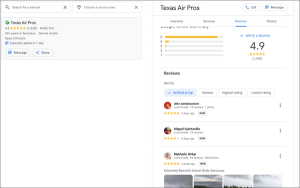People don’t just scan product descriptions on Amazon or your website. They look at them like a set of specs on a new car. Consumers want to know the details that make your broom better than the 500 other brooms available for purchase, and they need to be able to gain that understanding fast. That means your marketing team has to develop compelling descriptions that do all the hard work for prospective consumers.
For most companies small and large, product descriptions tend to be somewhat of an afterthought. Since most consumers are starting to go online before they make a purchase, it would benefit every product provider to start shaking up their product description process for better sales. Here are some of the biggest no-no’s to avoid in a product description:
- Don’t let bad grammar or word usage get posted – You would be surprised how often small errors get passed onto product labels and descriptions. Occasionally, glaringly obvious errors are posted and printed and can alter purchasing decisions. Multiple people should look at the final description before it’s posted. Often, those who write a description may not even see the error when reading back through it.
- Don’t re-list the manufacturer’s listing – Not only will this hurt your SEO (search engine optimization) efforts, the manufacturer’s description is often poorly crafted and non-brand specific. Instead, strive to make each product description unique. Pull out a thesaurus, paint a picture, and watch as your product sells itself.
- Don’t forego the product description altogether – Every product posted online needs a description. Although the purpose of an item might be apparent, a well-crafted product description highlights the level of quality and differentiates a product from other listings. Include a physical description, background information, and use suggestions if possible. The more information you can provide, the more easily a consumer can connect a product with a need or want.
- Don’t write an article – Product descriptions are supposed to be easy to scan through. They don’t necessarily need to contain complete sentences or paragraphs. Instead, use a few key phrases and add several bullet points to highlight the features of a product. Anything that might persuade a consumer to make a purchase can be included in an effective description.
- Don’t forget keywords – The key to selling products online or in a store is marketing and advertising visibility. Improve SEO strategies to get your business noticed by enriching your product descriptions with relevant keywords. Rather than including as many keywords as possible in a listing, focus on the ones that naturally integrate well into the language.
- Don’t miss out on the power of reviews – People trust customer reviews to tell them the truth. Empower your consumers to do some organic marketing for you by allowing and encouraging purchasers to leave a review. The practice may also boost sales by boosting interaction on a page and keeping it relevant in search results.
- Don’t forget to act like a consumer, first – One of the best ways you can craft an enticing product description is to think about what you would be looking for if you were the ideal consumer for a product. Why does someone need your product and why does your brand deserve attention if someone is comparison shopping?
- Don’t forget to rejuvenate your descriptions – If your brand has core products or products that aren’t doing very well, boost SEO by giving your descriptions a facelift once a year. Reword the descriptions and repost them with new keyword and data considerations to keep your products in the forefront of search results.
- Don’t get too crazy with flowery language – While new words can make a product description read like new, it may not be as relevant to the product. If you do change your product descriptions, make sure that you stay true to the product and its features first and foremost. Words that will never be searched for are unnecessary and unhelpful for sales.
- Don’t diversify your formatting – One thing that should remain the same throughout any e-commerce or product listing site is its formatting. Make sure that the formatting for every product description is visually the same. Consumers should be able to browse through page after page of products and easily examine the specs that will impact their purchasing decisions.
Crafting a Great Product Description
Although content writers go back to the basic questions of any story – answering those questions is a vital part of delivering a well-crafted description. Start with who, what, when, where, why, and how, but you don’t necessarily need to format your product description in the same way. Try to incorporate more than one answer into a sentence and use bullet points when you’re able to. For instance, if I was selling a robot dog, my product description might look like this:

Have you always wanted a pet, but had allergies that prevent you from bringing home a lovable, furry companion? The Robot Pooch XS can be taken anywhere and comes with a unique personality that will evolve with use. Simply turn on your Pooch when he arrives at your door. Your lovable, truly hypoallergenic pal comes with:
- One specially designed Robot Pooch XS,
- A rechargeable battery and docking station,
- Your “adoption certificate” and owner’s manual,
- A unique, online profile and database registration card, and
- A five-year limited lifetime warranty.
Perfect for children and adults, the Robot Pooch XS acts just like a real dog, without the vet bills, cleanup, or sad goodbyes. When you can’t accommodate a real dog, let the team at Robot Pooch help you experience the love and companionship of an incredibly real substitute.
See how that works? The text is broken up, bullet points were used, and the profile uses enticing sentences to convey relevant information. While some products descriptions may be longer or shorter, this answers all of the basic questions and focuses on a specific market.
If your product descriptions are looking a little sad, canned, or non-compelling, autumn is a great time to give them a facelift. Try out some of these techniques, and watch your company start seeing a difference in online and in-store sales.
Digital & Social Articles on Business 2 Community(101)
Report Post




